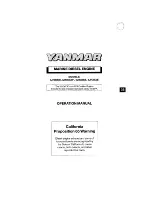
L10 Hardware Design
USB_DP
USB data positive
specification
open. Compatible with USB
with 27 Ohms series
resistance.
RF interface
PIN NAME
I/O DESCRIPTION
DC
CHARACTERISTICS
COMMENT
RF_IN
I/O GPS signal input
Impedance of 50
Ω
Refer to chapter 4
3.2 Operating modes
The table below briefly summarizes the various operating modes referred to in the following chapters.
Table 6: Overview of operating modes
Mode
Function
Acquisition
mode
The module starts to search satellite, determine visible satellites and coarse
carrier frequency and code phase of satellite signals. When the acquisition is
performed, it switches to tracking mode automatically.
Tracking
mode
The module refines acquisition’s message, as well as keeps tracking and
demodulating the navigation data from the specific satellites.
Standby mode
EXTINT0 pin can be used to make the module enter into standby mode. In
this case, the UART port and USB port are not accessible, and the current
consumption of the module is also minimal. The module could be woken up
by EXTINT0 pin.
3.3 Power supply
The main power supply is fed through the VCC pin. It is important that the system power supply
circuitry is able to support the peak power. So the power supply must be able to provide sufficient
current up to 150mA.
The circuit design of the power supply depends strongly on the power source where this power is
drained. An LDO (Low Dropout Regulator) device, such as Torex (http://www.torex.co.jp/english )
XC6219B332MR is recommended. For more details of this power supply application, please refer to
document [1].
3.4 Turn on and Turn off
3.4.1 Turn on
The module can be turned on by various ways which are described in the following chapters:
L10_HD_V1.01
- 14 -
Quectel
Confidential
















































